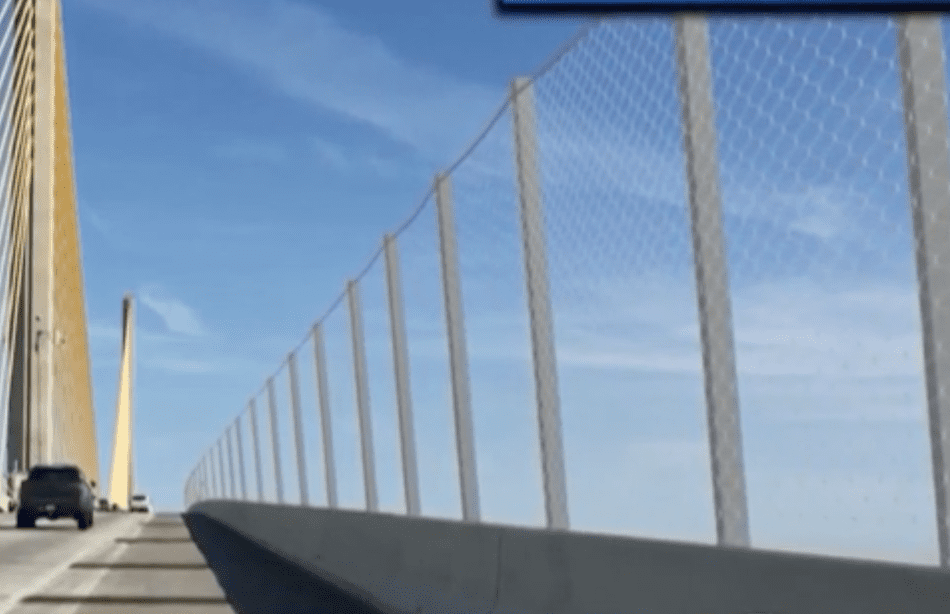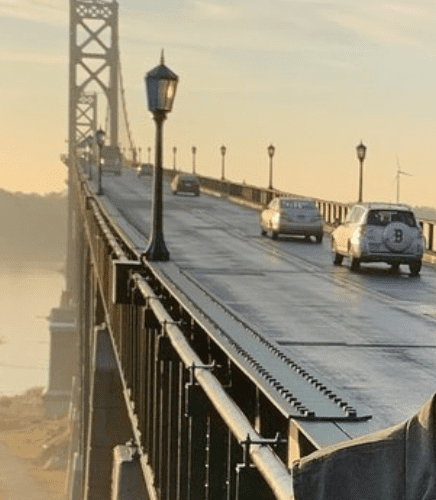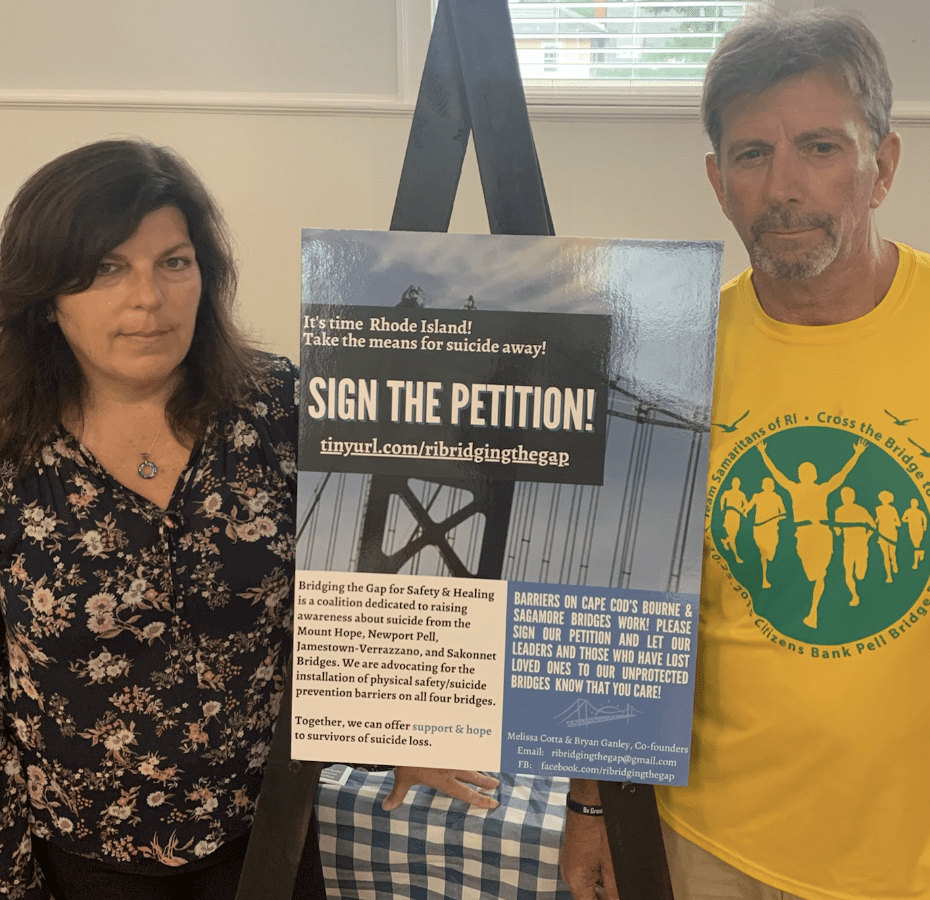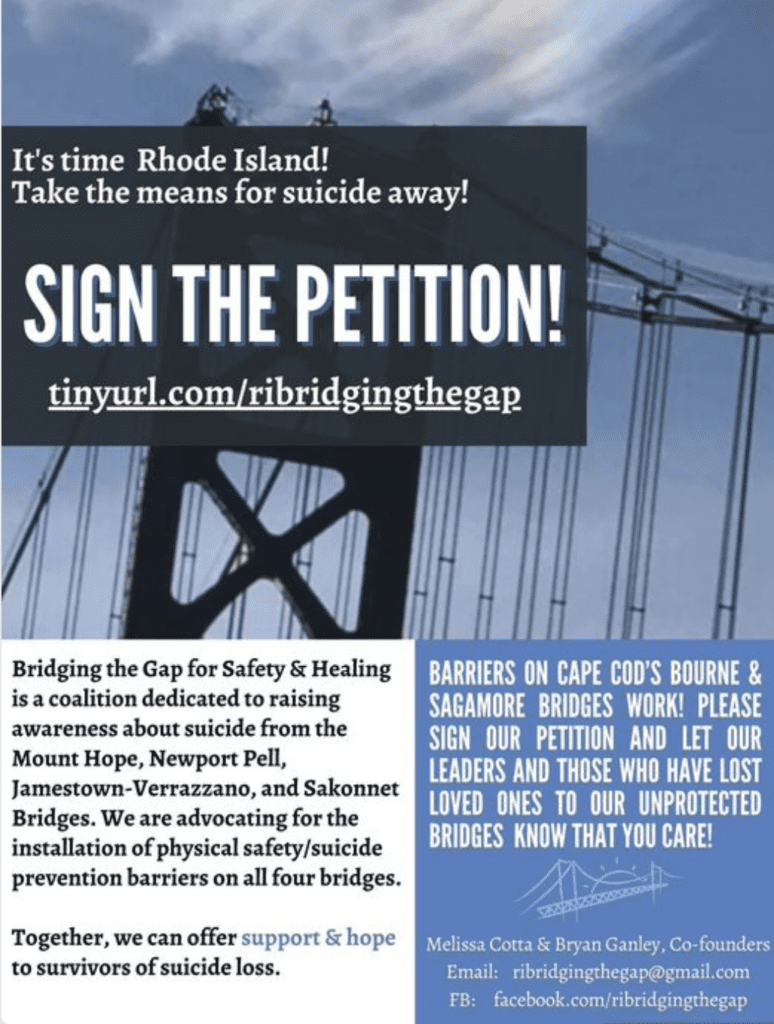Search Posts
Recent Posts
- Vinny Paz to be inducted TODAY into the International Boxing Hall of Fame – CES Boxing June 7, 2025
- In the News… quick recap of the week’s news (6.7.25) June 7, 2025
- Burn with Kearns: Strong without the spend: How scraps became strength tools – Kevin Kearns June 7, 2025
- Rhode Island Weather for June 7, 2025 – Jack Donnelly June 7, 2025
- How to advocate for threatened properties: The Heritage Alliance of Pawtucket June 7, 2025
Categories
Subscribe!
Thanks for subscribing! Please check your email for further instructions.

We can prevent “suicide by bridge” – Herb Weiss
By Herb Weiss, contributing writer
Photo: top, Bryan Ganley
As the General Assembly goes into recess until the fall, Rep. Joseph J. Solomon Jr. (D-Dist. 22, Warwick) sees H-5053, to require safety barriers or netting on the three bridges that connect Aquidneck and Conanicut Islands to the mainland of Rhode Island, as in hiatus. The bill in House Corporations never came out of committee but that isn’t stopping the House sponsor from working to see the legislative intent fulfilled.
According to Solomon, the Rhode Island Turnpike and Bridge Authority currently has a number of suicide prevention measures in place, including a smart surveillance system allowing authorities to act quickly, but virtually no way to physically deter a determined jumper. The Rhode Island Samaritans also has signs posted at the bridge entrances with information to access RI’s 911 system for emergencies or The Samaritans one to one hotline, where individuals can speak to someone.
But determined people do jump, Solomon notes, explaining the need for passage of H-5053.
“Too many people have committed suicide on those bridges in the last decade,” said Representative Solomon in a statement released when the bill was introduced last January. “Due to technological advances, there are various types of barriers and netting available to increase safety without hindering access for routine inspection and maintenance of the bridges,” he said.
“It’s not only a serious problem, but an alarmingly frequent one,” said Solomon explaining why he introduced his bill. “Last year alone, the Portsmouth Police responded to the Mount Hope Bridge 36 times. And the cost of suicide goes far beyond the individual. It affects friends, families, first responders and health care professionals. Those who survive the fall all say the same thing: they feel instant regret the moment their feet leave the railing.”
Sen. Louis P. DiPalma’s (D-Dist. 12, Middletown, Newport, Tiverton, Little Compton), companion measure, S-117 met the same fate by not being voted out of the Senate Housing and Municipal Government Committee.
If the General Assembly had passed these bills during this legislative session, Rhode Island would have taken a leadership position and joined other states such as New York, California and Florida and countries around the world that have moved to put physical safety barriers on the bridges to deter suicides.

Barrier under construction in Florida 
No barriers in Rhode Island
Raising the Visibility of the Need for Physical Barriers
Melissa Cotta of Tiverton and Bryan Ganley of Bristol founded Bridging the Gap for Safety and Healing. Their Facebook page says its mission is to “raise suicide awareness & prevention, increase cycling & pedestrian safety on our bridges & offer support to all the survivors of those lost including families and loved ones, witnesses, first responders and our entire community. Our top goals include preventing bridge suicides by advocating for restricting easy access to means of suicide in general & installation of bridge safety barriers.”
According to Cotta, who witnessed a suicide from the Mount Hope Bridge, and Ganley, a 40-year Samaritan volunteer and survivor of suicide by loved ones and friends, last year COVID-19 derailed the passage of legislation introduced by Solomon and DiPalma to bring suicide prevention barriers to Rhode Island’s bridges. This year, with legislation reintroduced, they turned to social media and Facebook to urge Rhode Islanders to call for lawmakers to install physical barriers on the state’s unprotected bridges.
“The time is now! Take the means for suicide away!” – they say. We don’t want to lose any more people to these bridges,” referring to suicides on the Jamestown-Verrazzano, Claiborne Pell, Mt. Hope and Sakonnet River Bridges.
Army Corp of Engineers say barriers work on Cape Cod’s Bridges
According to a 1983 memorandum “Information Awards” for the “Installation of Suicide Deterrent Fencing” on the Bourne & Sagamore Highway Bridges at the Cape Cod Canal barriers were installed at the request of The Samaritans of Cape Cod, led by Monica Dickens, great-granddaughter of Charles Dickens and a driving force in the creation of The Samaritans in Boston, on Cape Cod and in Rhode Island.
According to additional information provided by the Army Corp of Engineers, managers of the Cape Cod Canal and the Bourne and Sagamore Bridges “during a 28-year period after the fencing was installed, between 1984 and 2012, a total of 7 persons committed suicide from the bridges. A far lower rate of incidence than what was recorded for the years before the fencing was installed as part of the major rehabilitation project started in 1979.”
From 2013-April 2021, the Army Corps is aware of “two attempts that were prevented thanks to the quick actions of state and local law enforcement officers. The presence of fencing may not only deter attempts from occurring, but it can also delay an attempt long enough to give law enforcement a chance to successfully respond to an incident when one does occur. “(Note: This is not conclusive information as reports may have gone to state or local police.)

“In RI, from 2009-2018, we know of at least 33 deaths from our bridges and from November 2020 to July 2, 2021, we are aware of at least 8 persons lost from the bridges,” say Cotta and Ganley.
“Many suicides can’t be predicted or prevented, but suicides from bridges is something we can prevent with the installation of Suicide Prevention Barriers on our state’s three major bridges,” noted Ganley in written testimony to support H 5053.
Ganley added: “As a Hotline/Listening volunteer, we are trained to first remove the means of suicide. A bridge with 135’ drop and only a 3’ rail, is like handing a suicidal person a loaded gun. These bridges are all loaded guns. We need to take away the gun.”
The Final Push…
With the Rhode Island General Assembly in recess, just days ago ABC 6 reported that Solomon and DiPalma are still seeking ways to fund the installation of barriers on Rhode Island bridges to prevent suicide. Solomon tells ABC6 in a statement:
“Although the General Assembly is currently in recess, we are still working behind the scenes with the RI Bridge and Turnpike Authority and the RI Department of Transportation on moving things forward. With one-time federal funding becoming available in the federal infrastructure bill, it is our hope that some of the funding can be allocated to both the design and implementation of suicide prevention barriers or netting.
Although we are moving in the right direction this is not a time to become complacent. Melissa Cotta and Bryan Ganley have done an outstanding job working on this from day one. They are continuing to raise awareness on this issue and show that it is a priority in Rhode Island. Rhode Island would not be the first state to implement these barriers. Those states that do have barriers show how effective they are. I will continue to push for this legislation with the intent of getting it passed when we reconvene this fall.”
Sign the Petition…

“The petition for safety/suicide prevention barriers is intended to increase awareness of this issue and show residents of Rhode Island, as well as the surrounding areas that use our bridges all the time are in support of these barriers,” says Cotta.
The public’s call for installing safety/suicide prevent barriers has gained a powerful advocate. House Speaker K. Joseph Shekarchi (D-District 23, Warwick), states “I admire Representative Solomon’s passion and commitment to this issue. We will continue to work with him.”
At press time, 2,630 have signed Cotta and Ganley’s petition to add barriers to Rhode Island’s unprotected bridges. They hope to add thousands more to send a message to the Congressional Delegation, the Governor and the General Assembly to act to add physical barriers to Mount Hope, Pell, Jamestown and Sakonnet Bridges. To view and sign this petition, go to tinyurl.com/ribridgingthegap
Suicide emergency? Call 911. Need to Talk? Call The Samaritans of Rhode Island at 401.272.4044 or 1.800.365.4044. Learn more at www.samaritansri.org
Herb Weiss, LRI’12, is a Pawtucket writer covering aging, health care and medical issues. To purchase Taking Charge: Collected Stories on Aging Boldly, a collection of 79 of his weekly commentaries, go to herbweiss.com. His sequel, Vol. 2 Taking Charge: More Stories on Aging Boldly will be able for purchase in August.
_____

Herb Weiss has enjoyed a distinguished 41 year career in journalism, earning a national reputation as an expert on aging, health care and medical issues. Over 780 articles that he has authored or coauthored have appeared in national, state and local publications. Governor Gina Raimondo appointed Him to the Rhode Island Advisory Commission on aging.
Today, Herb’s weekly newspaper column appears in the Pawtucket Times and Woonsocket call, two North Rhode Island daily newspapers, and will now run in RINewsToday.com. Herb and his wife, Patty Zacks, reside in Pawtucket, Rhode Island.
Melissa & Bryan

Thank You for this article. My friend jumped from the Jamestown bridge in June. If there was a net he might still be alive.
Please follow the link in the article and you can sign the petition
Excellent article. Very informative.